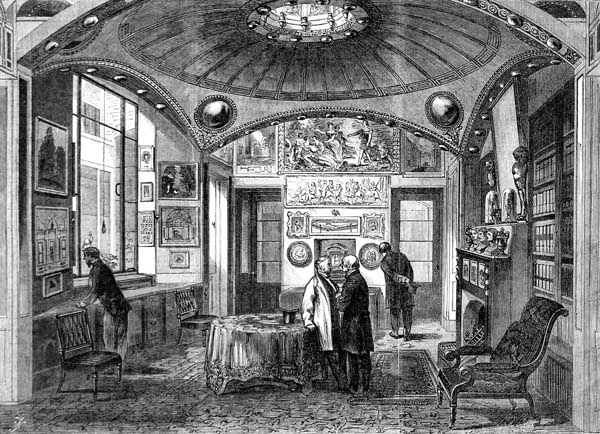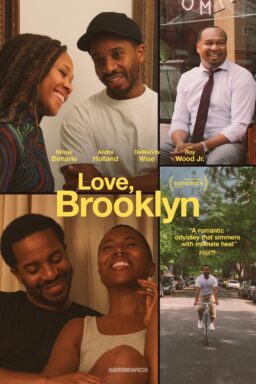This is a book introduction I wrote in 2001. Alibris and Amazon list used copies for as little as $3.50. Google it for no end of affectionate praise.
On a rainy Spring day in 1968, in the book store that stood at that time on the north side of Leicester Square, I bought my first copy of “Nairn’s London.” On the cover of the Penguin paperback was a photograph of a jolly man leaning from the driver’s window of a red Routemaster bus. I took it into a pub, began to read, and wandered out with my umbrella to look for the nearest of Nairn’s treasures. I had to find it on my own; he was firm that this was not a guide book or a collection of “walks,” but a series of short essays on 450 of “the best things in London.”
By “best” Nairn meant also the worst (the ugliest house in London, the most stygian Underground passage), and what he looked for was the real thing: “I have all the time tried to be rigorous–not any old Wren church or view or pub, but the good ones–and I have all the time tried to get behind conventional aesthetics to an internal reality in which beauty is only one facet. What I am after is character, or personality, or essence.”
During the next several years I worked my way through Nairn. I will not say that I have completed his Chapter 11 yet (West London: Kensal Green to London Airport), nor have I been to Epsom or Barnet, but I have been many times to Sir John Soane’s breakfast room (“If man does not blow himself up, he might in the end act at all times and on all levels with the complete understanding of this room”). And I have visited Soane’s Bethnal Green Church, and his stables in Chelsea, and his Dulwich Art Gallery, and read books about him–for that is the way Nairn works, leading you by specific examples into a general curiosity.
I remember the day I wandered the side streets beyond Lord’s Cricket Ground (not listed, although Lord’s Tavern is) until I stood before 77 Langford Place (“Sheer horror: A Francis Bacon shriek in the affluent, uncomplicated surroundings at the end of Abbey Road”) and admired its bay window “like the carapace of a science-fiction insect.” And the many days I walked along the Thames; in the earlier years on the South Bank you could still smell the spices from the Orient, permeating the bricks of the old warehouses which later became condos, or were replaced by the modernist concrete bunkers Nairn despised. And I remember days along Fleet Street and the byways of the City, and beyond Notting Hill to Lord Leighton’s House.
Walking around London has been a pastime of mine since 1965, when I passed through in January on my way home from Cape Town, and found that the writer Daniel Curley, my professor at Illinois, was on sabbatical there. He was a walker. He led me across Hampstead Heath to the Spaniard’s Inn, Kenwood House and Marx’s grave, on a journey that led to our book “The Perfect London Walk.” We also walked along the canal towpaths into Regent’s Park, and saluted Dick Whittington’s cat.
Now, with Nairn, my scope expanded. Following the book was like having an opinionated, passionate and eccentric guide, who remembered a great London and treasured what was left after the destruction of war and “renewal.” “It was Nairn’s pen more than any other,” wrote Deyan Sudjic in an obituary appreciation in the Sunday Times, “which helped unleash the deluge of protest that erupted in this country at the damage being done by crude and incompetent new development.”
But Nairn was not a sentimentalist like John Betjemann, who liked the old because it was old. “He was always interested in good new buildings as well as old,” Sudjic noted, and in 1964 wrote “Modern Buildings in London.” I followed Nairn not only to Paxton & Whitfield’s ancient cheese store on Jermyn Street (“It may seem individuous to put in just one London shop, but this one is a quintessence of what metropolitan choice should stand for”), but to the Hoop at Notting Hill Gate, which he thought had “the best modern pub interior in London.”
The Hoop is a pub no more, and indeed many of the pubs Nairn liked have been gutted. With Dan Curley I sat by the fire in the back room of the Blackfriar on Queen Victoria Street, feeling I had penetrated to a secret place in London, and only on a later visit with the book discovered its Art Nouveau interior was not a great favorite of Nairn’s: “The theme of bibulous friars is flogged to death–each item inscribed “by Henry Poole, R.A.”–the frieze is crowded by sententious axioms, the walls look like very old gorgonzola.” He did however like “the little bar on the corner,” a triangular wedge big enough for five or six people, and decided the Blackfriar was “much worth seeing, in any case; there is nothing else like it.” He would have been horrified at what happened in the 1980s, when the interior walls were ripped out, the cozy little spaces and private rooms were “opened up,” and a place unique in all the word was converted into just another pub.
Nairn liked pubs, and included a lot of them in his book, from the “real West End glitter” of the Salisbury on St. Martin’s Lane, to the mirrors and crystal of the Red Lion on Duke of York street (“If I could keep only one pub out of the whole London galaxy, this would be my choice”), to the shabby, comfortable King’s Arms on Fulham Road, where “in season,” he said, “yours truly” might be found “scribbling these notes.” I never went in there without looking for him. Nairn haunts my London, he has been my friend even though I never met him, and the city is richer, deeper and more valuable to me because of him. I cannot walk past the Albert Memorial without saluting the elephant with “a backside like a businessman scrambling under a restaurant table for his cheque book.” When I visit the Spaniard’s Inn, I am cheered by the way the old tollhouse forces the road to narrow suddenly to one lane. (“The cars, of course, sort it all out, as they will if they are given the chance and not beaten into bloody-minded truculence with too many rules.”) And at St. George, Bloomsbury, I note that Nairn admires not the Hawksmoor church but “a narrow passage which distills that great man’s imagination in a more personal and direct way than any of his better buildings.”
Nairn lived from 1930 to 1983. A 1996 appreciation by Graham King in Urban Design Quarterly describes him as an “outsider,” a mathematics graduate and peacetime RAF pilot who had no formal training in architecture, city planning or photography but used his skills in all of those areas to exercise enormous influence. In 1955, in a special issue of the Architectural Review, he made an immediate impact on the urban design scene with ‘Outrage’ (1955) which attacked the misuse of the “subtopias” (his coinage) which surrounded the developing postwar cities. This was followed by “Counter Attack Against Subtopia,” another special issue of Architectural Review, in 1956. He became a regular contributor to the Telegraph, Observer and the Sunday Times, and in the area of Urban Design, King says, “he is the first. and still virtually the only commentator who exercised his critical skills across the media, magazines, books, newspapers as well as on television.” In 1970 he hosted “Nairn’s Travels,” a series of BBC programs in which he toured the city and countryside, pointing out what was right and what was wrong, and he was a key contributor to Nicholas Pevsner’s monumental Buildings of England series, co-authoring the volumes on Surrey and Sussex.
As I explored London, Nairn in hand, there was something else I observed in addition to his acute eye and fierce passion. That was his prose style, somehow concise and expansive at the same time. He seemed to be standing beside me, chatting about the building we were both looking at, and yet when I looked at his entry with a writer’s eye I was astonished to find how brief it might be, and how it did not seem to contain an unnecessary word.
Some 15 years after I became a follower in Nairn’s footsteps, I found myself one night at dinner at the Telluride Film Festival with David Thomson, the British film critic, now based in San Francisco, whose “Biographical Dictionary of Film” is one of the most useful and intelligent books about the movies. Thomson, too, achieves the tricky mixture of ease and concision; in his essays about directors and actors, he never seems to hurry or abbreviate, but he never wastes a word.
I told him this quality in his writing reminded me of a writer named Ian Nairn: “Have you heard of him?”
“Heard of him?” said Thomson. “I was his editor at Penguin.”
So I was not mistaken in sensing the same desire to encompass a world in a paragraph. In speaking with students who want to write reviews, I recommend Thomson and Stanley Kauffmann in The New Republic as practitioners of all of the principles of Strunk and White but especially “use no unnecessary words.” And I mention Nairn, although I know it is unlikely they will be able to find his books.
“Nairn’s London” went out of print after the 1967 reprint of the 1966 first edition. I suppose it was too choosy and demanding for the casual tourist, who wants to see the church, not the passage beside it. Nairn did not make it easy for his readers, did not hold our hands by telling us what tube stop to use and when to turn left or right. We had to find the places ourselves. Yes, he provided map references, but I was never able to find the maps they referred to–and didn’t try very hard, because part of the fun was using a London map and trying to figure it out.
In 1986 or 1987, after Nairn had died, I was having dinner at the home of the publisher Peter Mayer, a friend who had moved to London to take up the reins at Penguin.
“Penguin has a book you should put back in print,” I said, and told him about “Nairn’s London.”
“Bring it with you the next time we see each other,” he said, “and I will put it to a test.”
“I have it with me right now,” I said.
“I want to see what he has to say about my favorite bit of London,” Mayer said. “Does he write anything about the Thames-side walk from Hammersmith down toward Chiswick?”
He did. I read the pages aloud (“be careful; one set of steps leads to a houseboat which declares that “Trespassers will be drowned.”).
“He’s absolutely right,” Mayer said. “I’ll look into it.”
A few weeks later Peter wrote me: Nairn’s widow, Judy, was in fact an editor at Penguin. A new edition would be arranged. Many of the details in Nairn’s accounts would have changed–a building pulled down, a view destroyed–but of course his prose must be preserved. Peter Gasson, a student of English literature at Oxford, would trek in Nairn’s footsteps (“a long-cherished ambition”) and write brief postscripts and updates where needed. That edition was published in 1988, with the map references helpfully updated to correspond to London A to Z as well as the Ordnance Survey. But within a few years “Nairn’s London” again drifted out of print, although I was surprised how many of the London lovers I met knew it and loved it.
In the Spring of 2001, another dinner, this time in Chicago, with Thomas Meagher, editorial director of The Akadine Press, whose catalog The Common Reader is essential to any Anglophile. Of course Nairn came up. Meagher, who knew the book well, had been mulling the idea of a new edition. He thought a post-Gasson update was unnecessary, because the book stands on its own, as record, history and memory. Reader, this is that edition.












